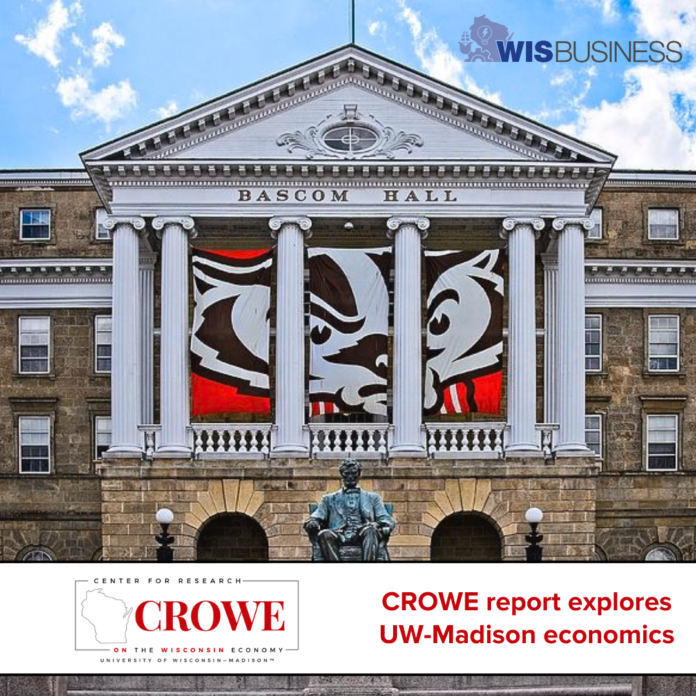In a recent report, a UW-Madison think tank found instructional staff growth at the university hasn’t kept up with rising undergraduate enrollment.
The Center for Research on the Wisconsin Economy, or CROWE, recently released a report called “Administrative Intensity at UW-Madison,” the fourth in a series focused on the economics of the university.
It focuses on two different metrics: administrative spending per undergraduate student, and the ratio of non-instructional to instructional staff.
In 2012, that first measure was $13,300, which was above the median among peer universities of $11,500. In the following five years, administrative spending per undergrad at the university dropped just below the median at other public universities at the Association of American Universities. But by 2022, it had reached $16,700 — “almost identical” to the median.
Meanwhile, the section of the report focused on the second metric shows non-instructional staff at the university have increased “much more” than instructional staff over the past decade or so.
Between 2012 and 2022, full-time, non-medical non-instructional staff at the university increased by 20% while instructional staff increased by 11.7%. Over the same period, undergraduate enrollment increased by 17.7%.
“This ranking persists even if we were to remove non-administrative positions (e.g., researchers) from non-instructional staff,” report authors wrote in a release. “The analysis suggests that the growth in instructional staff at UW-Madison has not kept pace with the growth in undergraduate enrollment in the last ten years.”
UW-Madison was found to have a higher ratio of non-instructional to instructional staff and a larger growth in this ratio over the study period, according to the report. The number of non-instructional staff was 3.8 times the number of instructional staff in 2012, but that ratio had increased to 4.1 by 2022. Over the decade, the median ratio for peer universities stayed “relatively flat” at 3.6.






